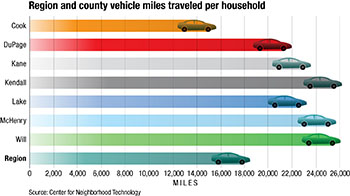Transportation Demand Management Strategy Paper
TDM Strategy Summary
Table of Contents
- What is TDM?
-
TDM Strategies
- Traveler Information
- Employer and Campus TDM
- Auxiliary Transit Services
- Market and Financial Incentives
- The Regional Role
Transportation Demand Management (TDM) is a strategy to reduce demand for single occupancy vehicle use on the regional transportation network. As a regional strategy to improve transportation system performance, TDM can reduce highway congestion and traveler delay; improve air quality; and improve access to jobs, schools, and other opportunities.
TDM strategies can be broken down into the following categories:
- Traveler Information – coordinated regional multi-modal traveler information/511 services, itinerary route and transit planning assistance, awareness campaigns, construction congestion-mitigation.
- Employer and Campus Transportation Demand Management –support for employer, campus, TMA, and other site-specific TDM programs
- Auxiliary Transit Services. Emergency ride home programs, carpool and vanpool development programs, car sharing, rail shuttles.
- Market and Financial Incentives – tax incentives for commuters and employers, commuter rewards programs, pay-as-you-drive insurance and taxation.
In addition, the following programs and policies can also be considered TDM measures, but are largely covered in other GO TO 2040 strategy papers. Managed Lanes– high-occupancy-vehicle (HOV) and high-occupancytoll systems (HOT), congestion pricing, and associated facilities to improve the performance of dedicated
highway facilities. Parking Management – strategies to manage travel demand by changes in the supply, price, and utilization of parking Walking and Cycling – strategies to facilitate short trips and transit access by non-motorized modes. TDM strategies are implemented to reduce the demand for single occupancy vehicle trips on congested highway facilities. By increasing passenger vehicle occupancy or by diverting trips to transit, walking, and cycling, TDM can simultaneously increase person throughput on a corridor and reduce vehicle delay. Secondary benefits include reduced energy consumption, reduced pollution, and support for compact land uses.
A sample of findings:
- A comprehensive travel demand management program could result in a VMT reduction of up to 35%
- Transportation Management Associations can fulfill a great role in connecting employees to nearby transit
- Having a "Guaranteed Ride Home" (GRH) is among the most important factors determining the effectiveenss of a commute trip reduction program
If you're interested in learning more about TDM, please review the following CMAP strategy report. Comments and criticism are encouraged.
|
Links Related Information |
